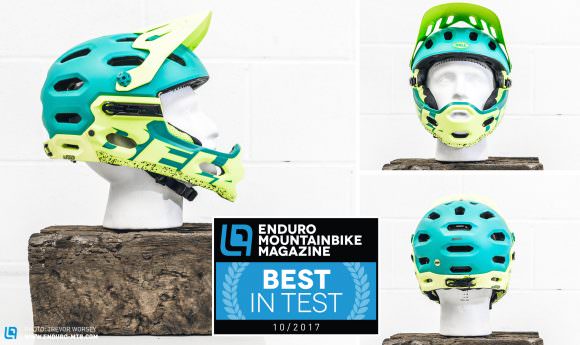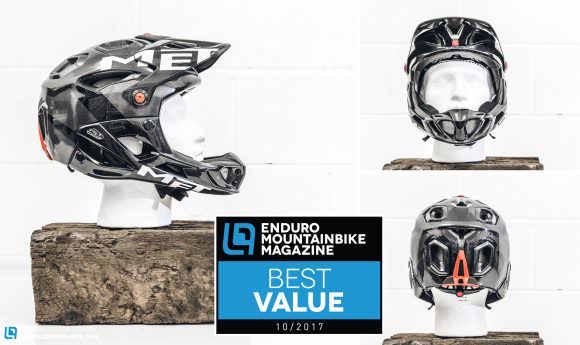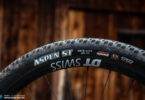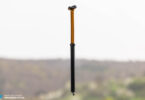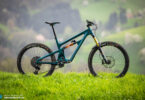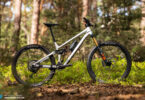When it comes to aggressive trail riding, lightweight or removable chin guard full face helmets are more in demand than the latest iPhone X. We test six of the best to see if they can match the ventilation of a trail lid and the protection offered by a full face.
We are in the age where we expect everything to do more than one thing. Take our phones, for example: do you know that making calls is only the sixth most popular use of our smart devices? The same goes for our helmets. Not only do we expect protection, we demand good ventilation, lightweight construction, and now we even desire a removable chin guard too. The latest generation of convertible helmets claim to offer the protection of a full face with dramatically improved ventilation for more comfortable climbs. It’s time for a no-bullshit investigation to find out which is the best on the market.
Who buys a convertible full face?
Our bikes are now faster than ever before, personal records topple like dominoes on every ride, and the trails we ride grow increasingly technical. Inversely, our eyes are now more open to the effects of multiple concussions and safety is paramount. Everyone knows a DH-certified full face offers the most protection, but nobody enjoys a 1000 m climb in one. Life is about compromise, and compromise is the reason why many trail riders are seeking lighter weight helmets with chin guard protection. The industry listened and you can now buy a full face helmet which weighs just over 700 g. these new-school helmets boast a wider face opening and large vents for improved ventilation, and some even feature a removable chin guard which can be detached for the climbs then reattached for maximum protection when descending. From the start lines of EWS racing to beginners looking for a little more confidence and security, these new helmets are hot property – but which is best?
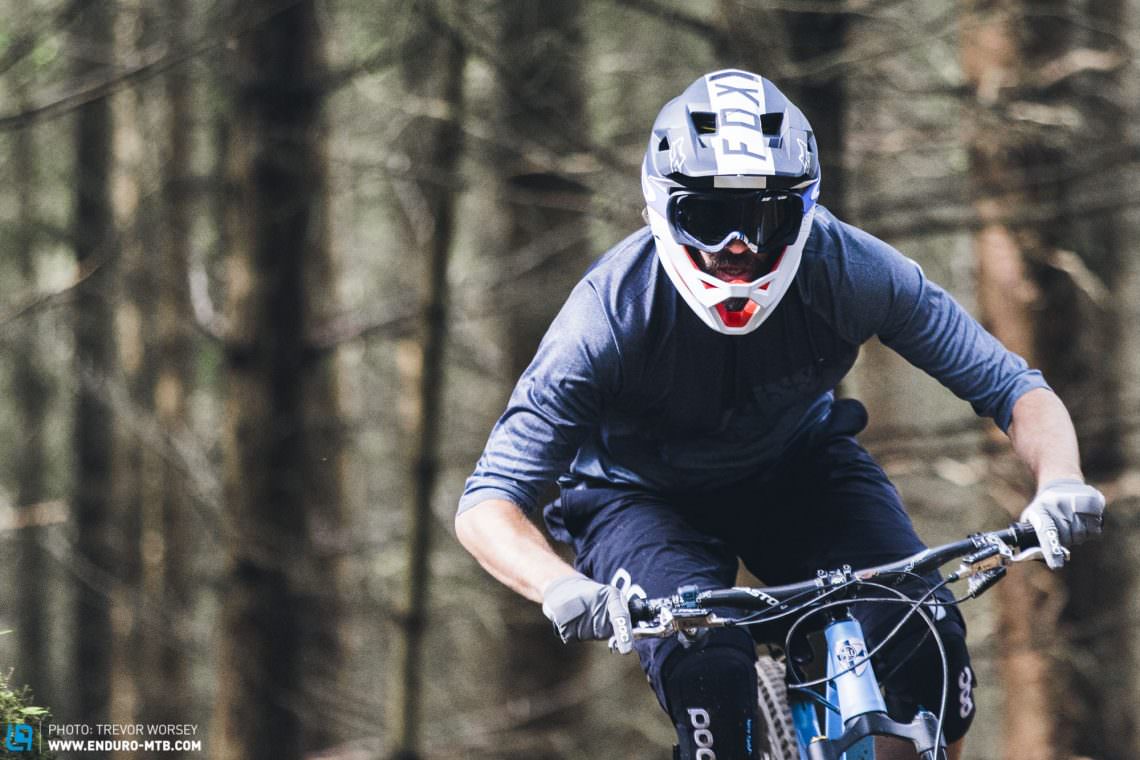
The helmets in test.
We collected six of the most popular new-school full face helmets to see which afford the best compromise of ventilation and protection. While all the helmets feature bigger vents, wider face pockets, and generally lighter weights than a DH full face, their executions are different. The Fox Proframe and MET Parachute both feature a slimline permanent chin guard, while the Bell Super 3R MIPS, Giro Switchblade MIPS, and Uvex Jakkyl Hde all feature a tool-free removable chin guard. The Lazer Revolution FF MIPS fits in the middle with a chin guard that requires tools to remove. We put the panel to the test on the trails on cold days and hot days, for short rides and long rides. We scored the helmets on comfort, weight, visibility, ease of use, and ventilation. We used glasses and goggles to check for compatibility issues. Occasionally and unintentionally we head-butted the ground.
| Helmet | Price | Weight* Total/Trail Mode |
Removable Chin Piece | |
|---|---|---|---|---|
| Fox Proframe | € 270 | 850 g | – | No |
| MET Parachute | € 220 | 774 g | – | No |
| Giro Switchblade MIPS | € 299 | 1.126 g | 809 g | Yes |
| BELL Super 3R MIPS | € 249 | 777 g | 445 g | Yes |
| Lazer Revolution FF MIPS | € 265 | 746 g | 485 g | Yes |
| Uvex Yeskkyl Hde | € 199 | 708 g | 438 g | Yes |
* size L/XL
Helmet standards are not protecting you!
No sooner do you start talking of removable chin guards than the confusing topic of ‘standards’ starts being thrown around, but basically, in the case of convertible full face helmets we only need consider two standards.
EN 1078
The standard that all helmets have to pass. Helmets are subjected to many impacts on the main shell, but the test DOES NOT test the protection offered by a chin guard.
ASTM F1952 DH
Tests helmets with higher forces than EN 1078 and if a chin guard is fitted, it MUST pass a deflection test.
In this test only the Fox Proframe, Giro Switchblade, Lazer Revolution FF MIPS, and MET Parachute meet the more rigorous ASTM F1952 DH standard, the same standard that certifies helmets seen on the WC DH scene. Does this mean they are safer? Yes and no. It’s true that EN 1078 (the standard that all helmets have to pass) does not directly test the chin guard of certified helmets. However, it is important to stress that helmet standards are grossly out of date and need revision – you are not being protected! Take, for example, the EN 1078 standard: it’s based on twenty-year-old protocols and we have unpublishable test results (the participating lab would not let us) from our 2017 trail helmet group test that show all helmets tested far exceed the low safety margins required by the standard. The test helmets exceeded the safety margins required by such a margin that the standard should no longer be considered a marker by which helmets should be deemed safe. To better protect riders we need the standards to be brought up to date – it’s time for the industry to move the goalposts.
| Helmet | ASTM-1952-DH | EN 1078:2012 | Ventilation | Chin piece removal* |
|---|---|---|---|---|
| Fox Proframe | Yes | Yes | ●●●○○ | – |
| MET Parachute | Yes | Yes | ●●●●○ | – |
| Giro Switchblade MIPS | Yes | Yes | ●●○○○ | ●●●●○ |
| BELL Super 3R MIPS | No | Yes | ●●●●○ | ●●●○○ |
| Lazer Revolution FF MIPS | Yes | Yes | ●●●●○ | ●○○○○ |
| Uvex Yeskkyl Hde | No | Yes | ●●●●○ | ●●○○○ |
*Ease of chin guard removal and reattachment
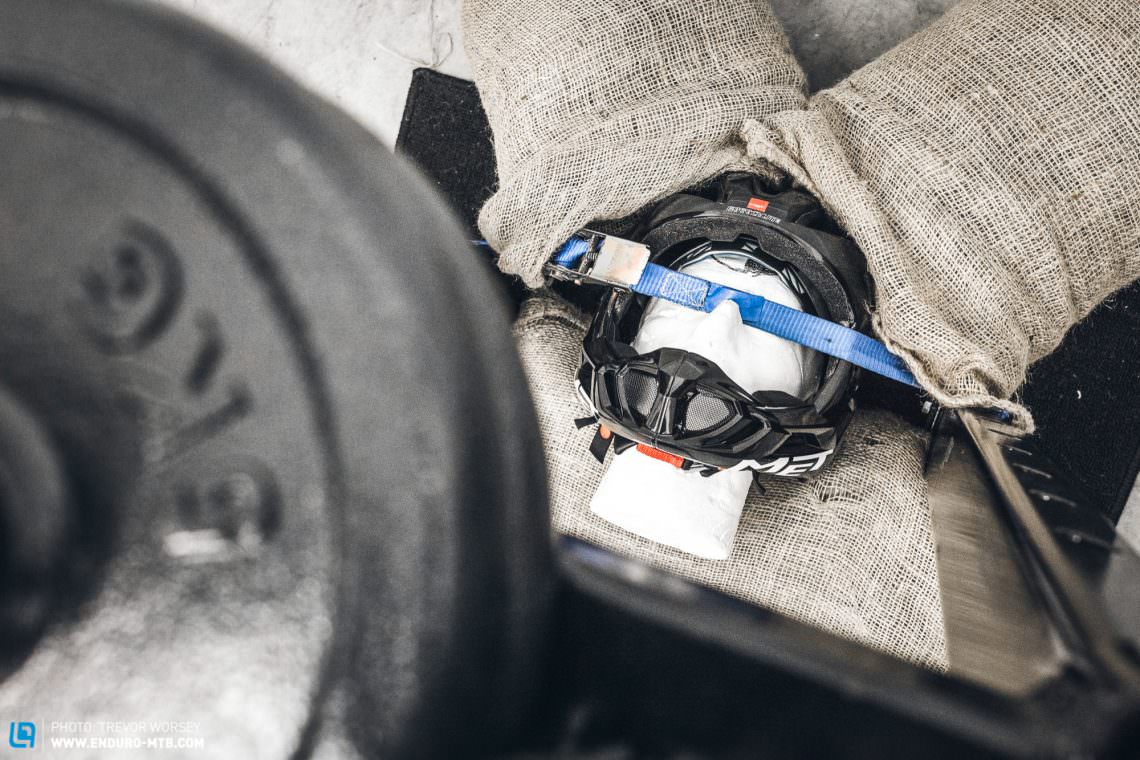
To the death!
Of course we would subject our test helmets to a thorough trail test, but we wanted to go further. We knew the upper sections of all the helmets had all passed the standards required, but we wanted to step into the unknown and answer the question, “Can the removable chin guards survive the same impacts as a ‘proper’ full face?” As soon as we mentioned testing the strength of removable chin guards, no certified test lab would help us. While some were happy to test at the minimal forces required by the standards, as soon as we mentioned “testing to destruction,” excuses were made and the phone lines went dead. So we did it ourselves. First, a disclaimer: in no way was this testing as rigorously controlled as in a test lab. We did not have access to expensive accelerometers or ‘dummy heads’ filled with scientific instruments, and we only tested one helmet per brand – so our findings can only be considered as observations, not fact.
However, we all know that real-world crashes are not scientific experiments, and we wanted to know if a removable chin guard would fail in a big crash. To find out, we constructed a slide hammer that would drop a 15 kg weight from 70 cm at a speed of 3.7 m/s (far in excess of the ASTM standard 5 kg at 2.8 m/s), releasing 102 joules of energy on impact directly onto the bridge of the chin guard – in short, a very big hit. High speed filming was used to capture the deformation and failure points. The energy was shown to be enough to significantly damage but not completely destroy the chin guard on full DH-certified control helmets within 2-3 impacts. Hits were repeated until the chin guards failed and lost function – to the death!
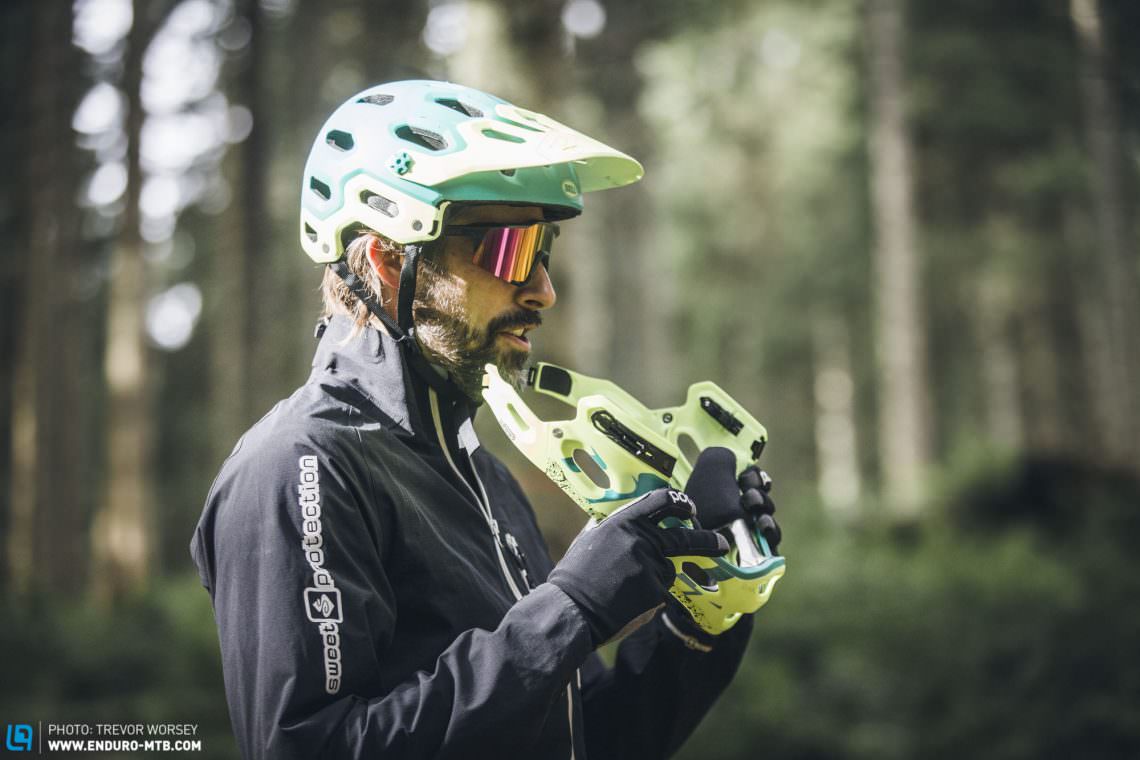
Is a removable chin guard as good as a real full face?
Before we talk of the destructive testing results, it’s important to mention the purpose of the chin guard. A chin guard, like the rest of the helmet, is not designed to deflect impacts, but to absorb as much of the energy as possible without losing structural integrity or damaging the rider’s face (think car crumple zones). With our limited sample pool, it would be irresponsible to release the inflammatory high speed videos, or draw absolute conclusions from the test. However, we can comment on our observations. We observed that ALL the test helmets withstood one very severe strike without loss of function, in what would represent a certain ‘warranty replacement’ level of crash. Both the Lazer Revolution FF MIPS and Uvex Jakkyl Hde helmets absorbed the first impact, but the chin guards were too compromised for further testing. The Bell Super 3R MIPS’s flexible chin guard provided good protection for three blows, but could not match the impact protection of the heavier Giro Switchblade MIPS. The standout performers when it comes to chin guard protection were the Fox Proframe and MET Parachute, both of which survived four massive impacts with some cracking but no loss of structural integrity. In conclusion, from our basic testing ALL the chin guards successfully protected the rider from an impact that represents what would be a very large crash on the trail, but the most robust were the Giro Switchblade MIPS, Fox Proframe, and MET Parachute.
Tops
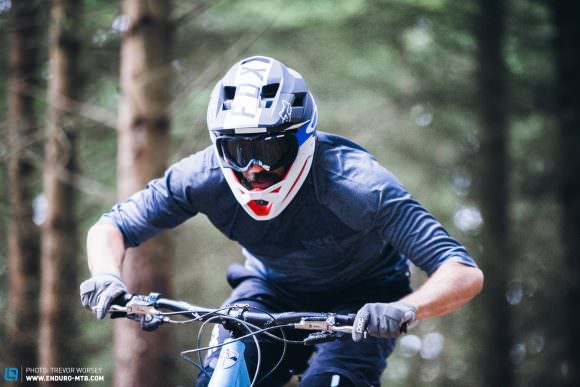
The balanced design of the Fox Proframe had us all drooling – it’s certainly the most attractive helmet in the test.
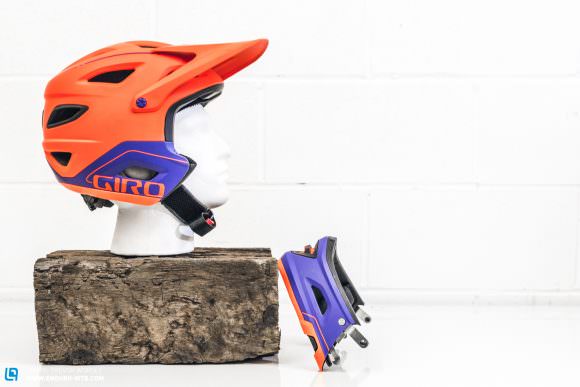
The new Giro Switchblade MIPS takes a radical new approach to helmet design, bringing the huge coverage and jaw protection of a DH helmet to the trail sector.
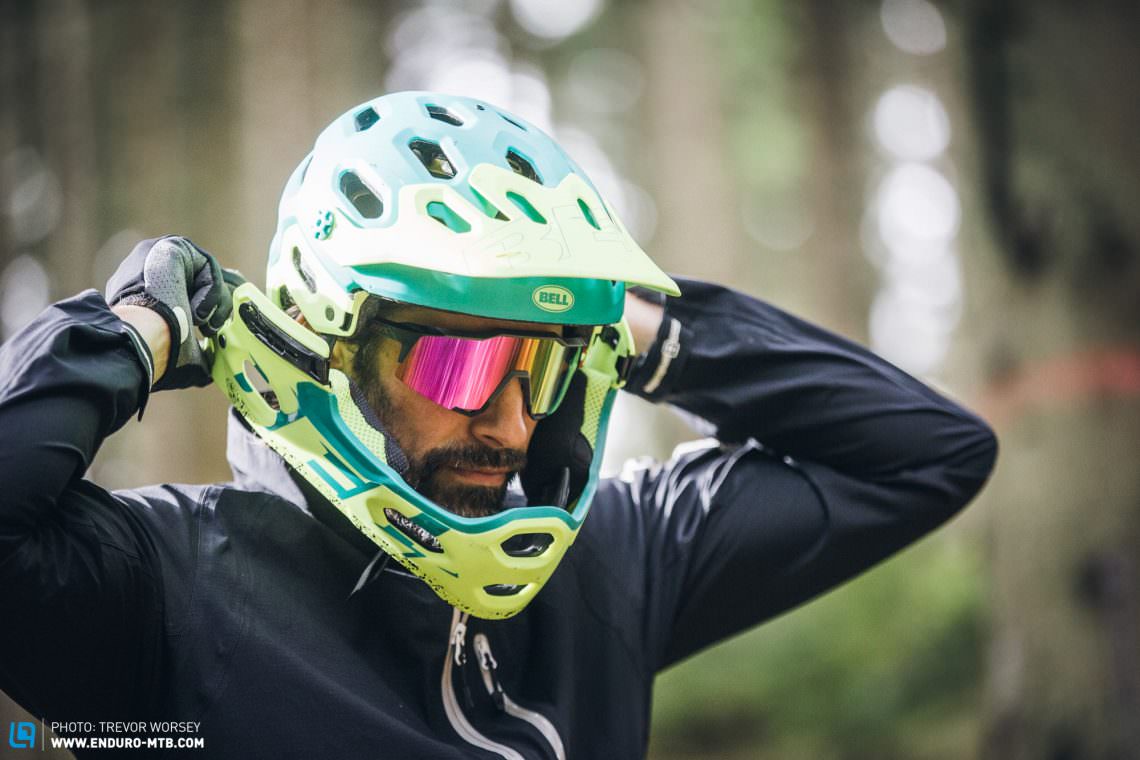
The Bell Super 3R MIPS can be converted from full face to trail in seconds. 2.28 is the record – can you beat that?
Flops
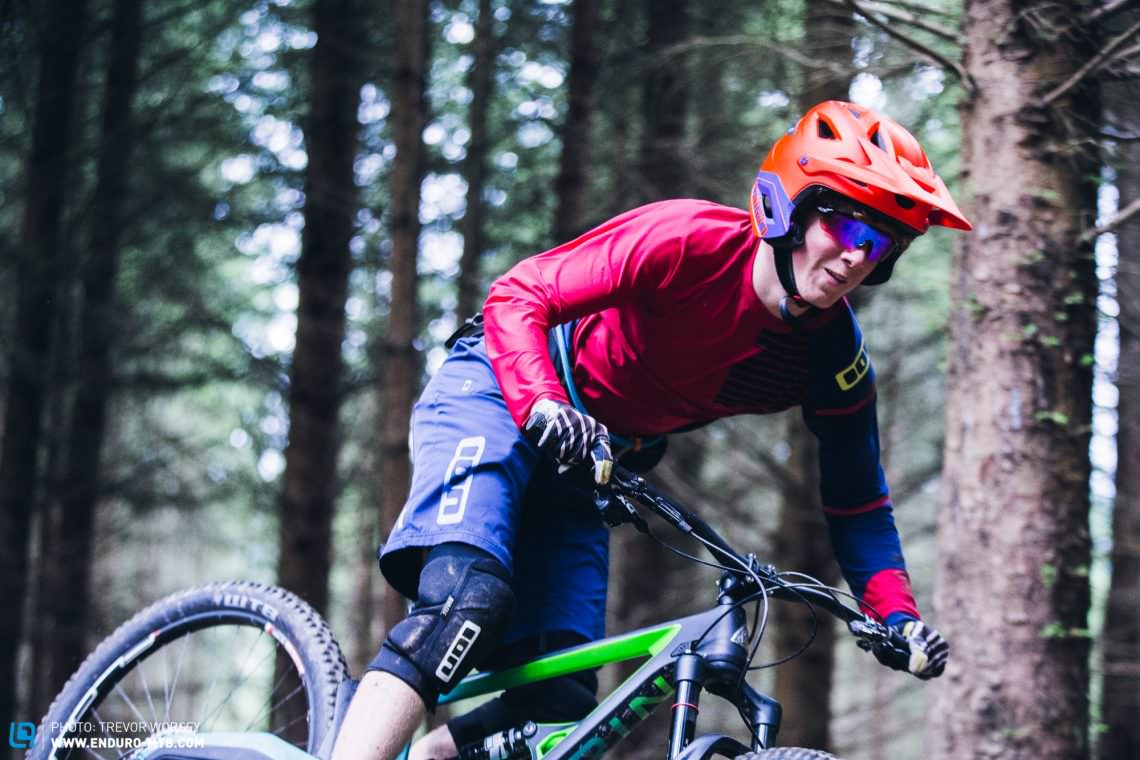
While the Giro Switchblade MIPS offers class-leading coverage, the minimal vents make for a hot experience, even without the chin guard.
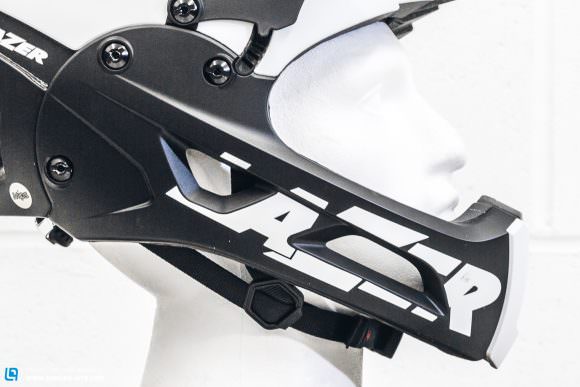
The Lazer Revolution FF MIPS left us confused: why have a removable chin guard that requires tools to remove?
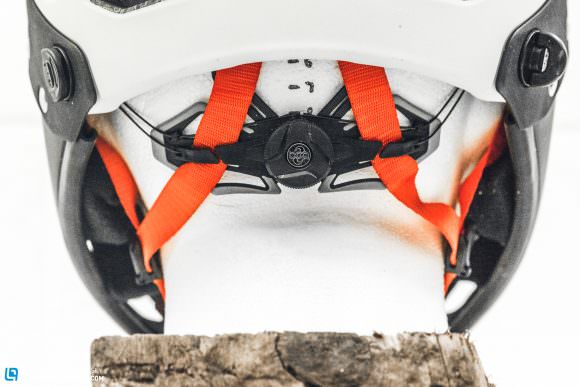
The loose straps and Boa closure system of the Uvex Jakkyl Hde frustratingly get trapped while donning the helmet.
So which is best?
The conclusion to this test is a difficult one. The perfect helmet for a rider is the one that fits the best, and fit is as unique a buying a new pair of shoes. Fit aside and with the chin guard in place, all the helmets in this test offer more protection than a standard trail helmet. For a trail rider who wants a helmet to use mainly without the chin guard, with occasional use as a full face for increased confidence, our top pick was the excellent Bell Super 3R MIPS. For most riders, the Bell Super 3R MIPS offers the best compromise of protection and versatility, offering two helmets in one. Affordable, comfortable, and highly adjustable, it impressed our testers enough to take the Best in Test honors.
For riders who want to race, chase KOM’s, or need the increased protection of a full face, we would recommend either the ASTM-certified Fox Proframe or MET Parachute MIPS. If the fit is good, style-focussed riders will undoubtedly choose the excellent Fox Proframe, which was a team favourite. However, the lighter weight, comfortable trail-style adjustable cradle, and very affordable price point give the MET Parachute the Best Value award.




